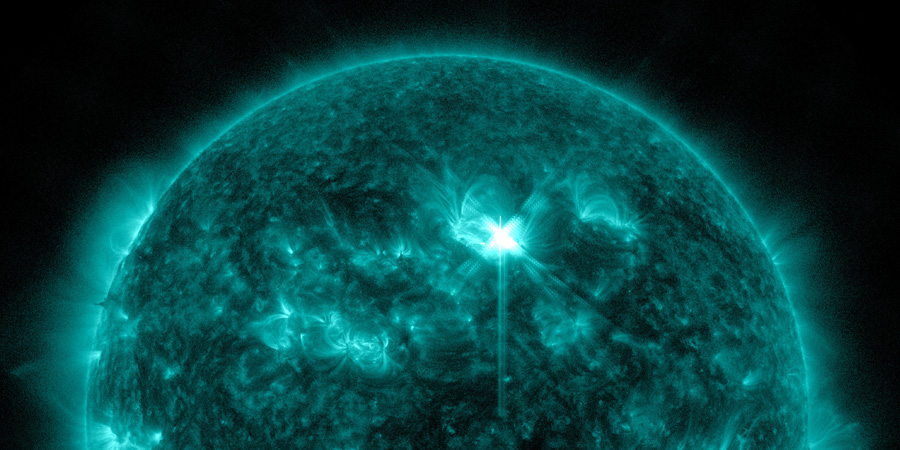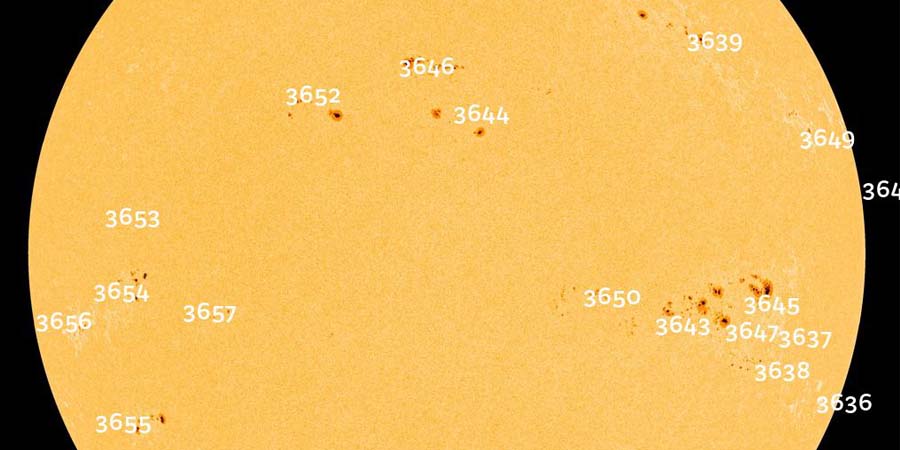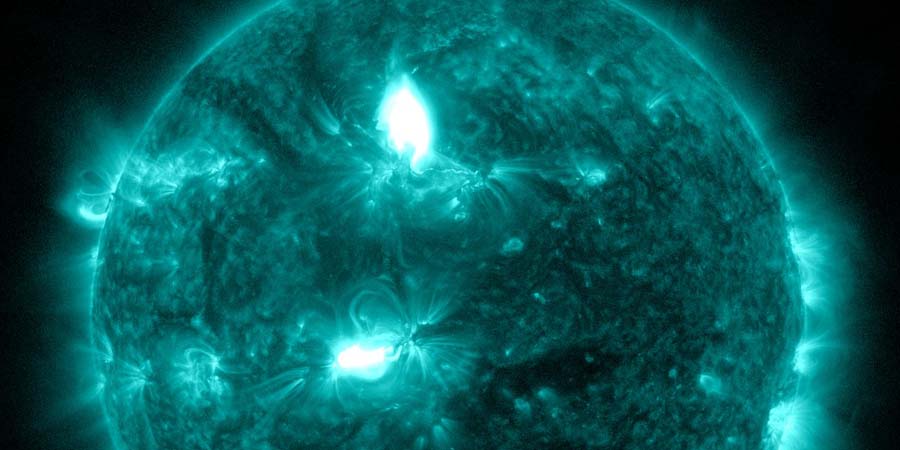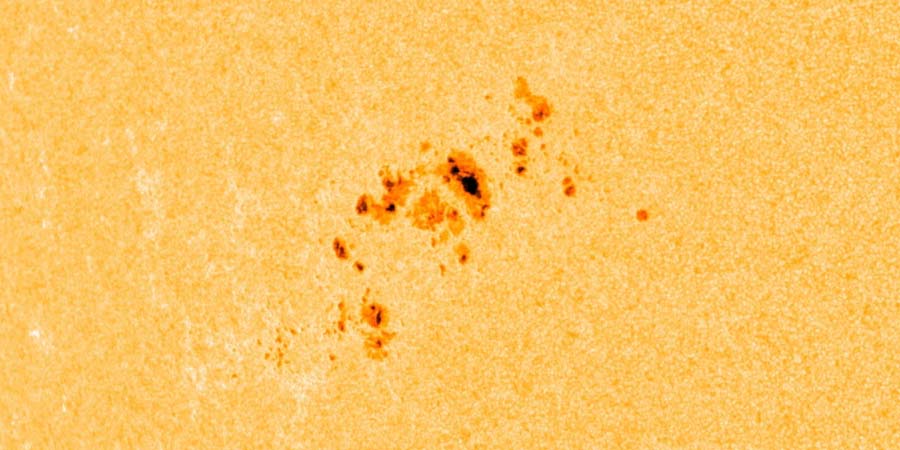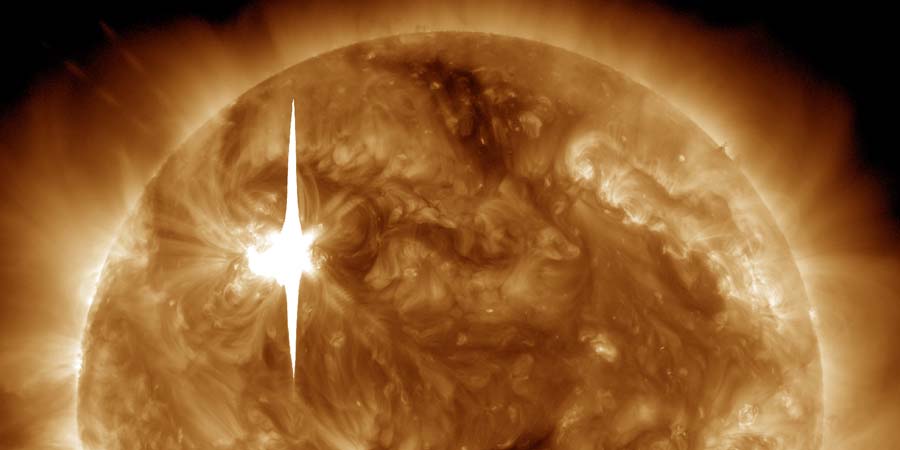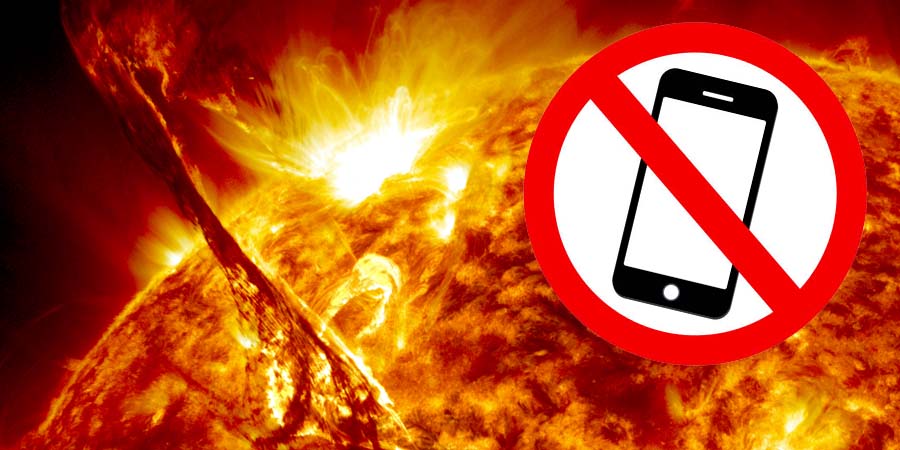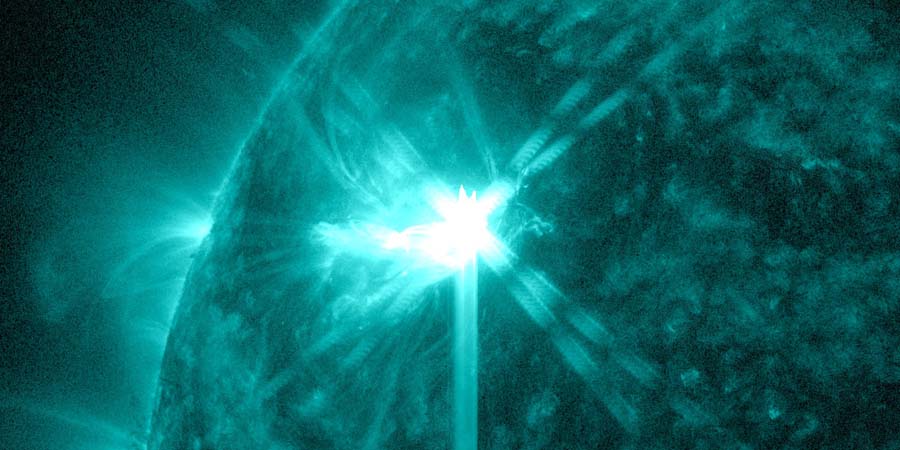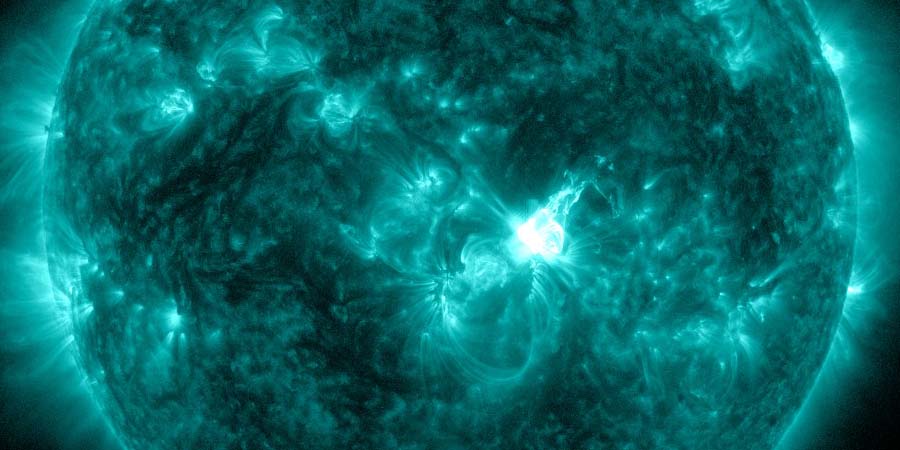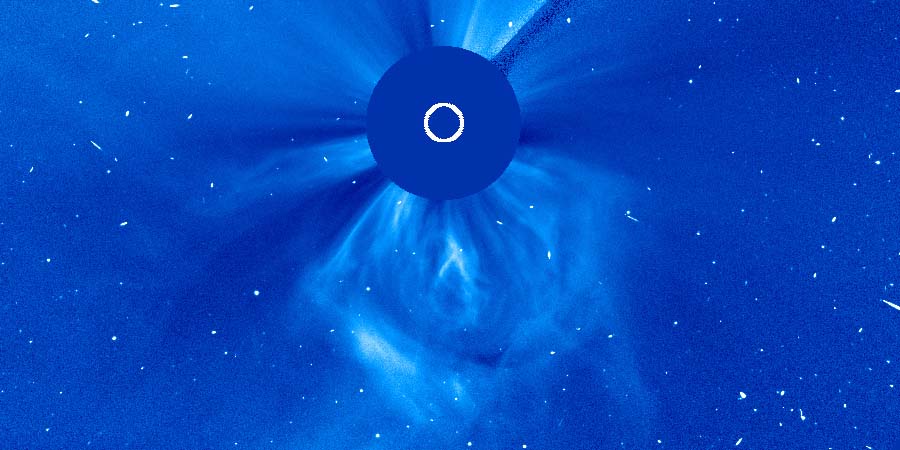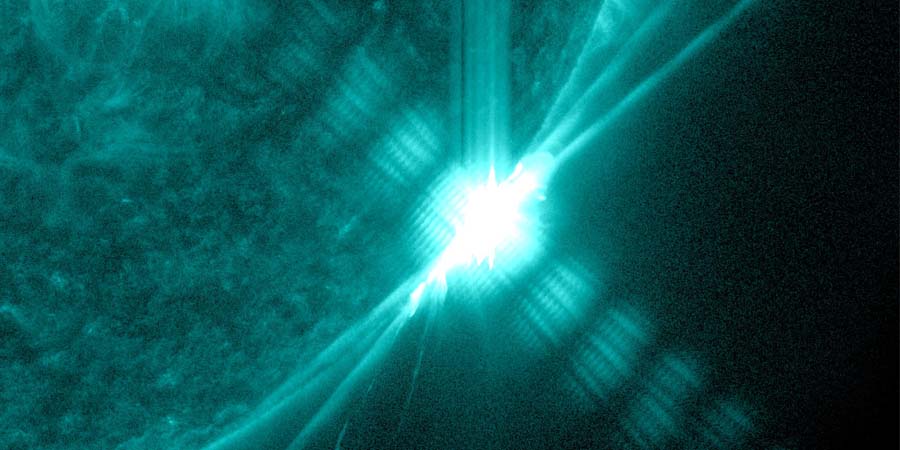Latest news updates Subscribe
Sunspot region 3663, X1 solar flare
Saturday, 4 May 2024 07:24 UTC
Sunspot region 3663 has developed into a complex sunspot region over the past few days with a Beta-Gamma-Delta magnetic layout. This complex magnetic layout already produced countless of M-class solar flares and one X1.6 solar flare which is going to be the focus of this article.
Lot's of sunspots! Big chance for major flare activity?
Monday, 22 April 2024 21:58 UTC
Our Sun is peppered with numbered sunspot regions at the moment... 18 to be precise! This adds up to a sunspot number of 283 which is very high.
X1.1 solar flare with earth-directed CME
Saturday, 23 March 2024 13:36 UTC
A complex eruption took place today which peaked at 01:33 UTC. The associated solar flare reached a peak of X1.1 (R3-strong) and came from sunspot region 3614. An unremarkable sunspot region north of sunspot region 3615. We say that the eruption is complicated because sunspot region 3615 flared at the same time but everything points to the solar flare and resulting eruption from sunspot region 3614 being stronger.
Sunspot region 3615, G1 watch
Wednesday, 20 March 2024 14:57 UTC
March has been a relatively quiet month thus far. We did had a moderate G2 geomagnetic storm back on the 3rd of March but other than a couple of unremarkable M-class solar flares not much has happened considering we are probably nearing the peak of Solar Cycle 24. But... we do have two topics to cover today. Sunspot region 3615 is an interesting sunspot region currently on the earth-facing disk and a minor G1 geomagnetic storm watch is in effect for today and tomorrow.
X6.3 solar flare
Thursday, 22 February 2024 22:55 UTC
Sunspot region 3590 does it again! It's third X-class soalr flare and the strongest solar flare of the currently Solar Cycle thus far peaking at a respectable value of X6.3 (R3-strong).
Did space weather really knock out cell phone service in North America?
Thursday, 22 February 2024 21:53 UTC
It's a hot topic today... North America woke up this morning with nationwide cell phone outage for AT&T. Is this caused by the two X-class solar flares from sunspot region 3590? A lot of people seem to think that is the case but this is completely false. Christian Harris from Space Weather Trackers made a great post explaining why space weather is not to blame for this outage. Correlation is not causation. Read his post below!
Two X-class solar flares only 7 hours apart
Thursday, 22 February 2024 08:33 UTC
Sunspot region 3590 which is located at a fairly high latitude produced two impulsive X-class events. The first solar flare peaked yesterday at 23:07 UTC with a maximum X-ray flux of X1.9 and the second solar flare peaked today at 06:32 with a maximum observed X-ray flux of X1.7. Both events caused a brief strong R3 radio blackout at the day-side of our planet.
M9 solar flare with earth-directed CME
Sunday, 11 February 2024 17:24 UTC
Finally a sign of life from sunspot region 3576! It produced an M9.0 solar flare (R2-moderate) which peaked yesterday at 23:07 UTC. The solar flare was fairly impulsive but did produce a nice eruption with a mostly northward trajectory.
New day, new coronal mass ejections to look at!
Saturday, 10 February 2024 18:34 UTC
Another day, another big coronal mass ejection... but this time it came from the south-east limb! The coronal mass ejection from yesterday's X3.3 solar flare was impressive but we have yet another fine specimen to look at. An incoming sunspot region erupted with a M3.4 solar flare that peaked at 03:54 UTC. This coronal mass ejection is just like the coronal mass ejection from the X3.3 solar flare not aimed at our planet.
X3.3 solar flare
Friday, 9 February 2024 18:15 UTC
Departing sunspot region 3575 which is already behind the south-west limb said goodbye this afternoon with a major X3.3 (R3-strong) solar flare which peaked at 13:14 UTC.
Latest news
Latest forum messages
Support SpaceWeatherLive.com!
A lot of people come to SpaceWeatherLive to follow the Sun's activity or if there is aurora to be seen, but with more traffic comes higher server costs. Consider a donation if you enjoy SpaceWeatherLive so we can keep the website online!

Space weather facts
| Last X-flare | 2025/01/04 | X1.85 |
| Last M-flare | 2025/01/22 | M1.3 |
| Last geomagnetic storm | 2025/01/04 | Kp5 (G1) |
| Spotless days | |
|---|---|
| Last spotless day | 2022/06/08 |
| Monthly mean Sunspot Number | |
|---|---|
| December 2024 | 154.5 +2 |
| January 2025 | 145.2 -9.3 |
| Last 30 days | 163.2 +45.8 |
